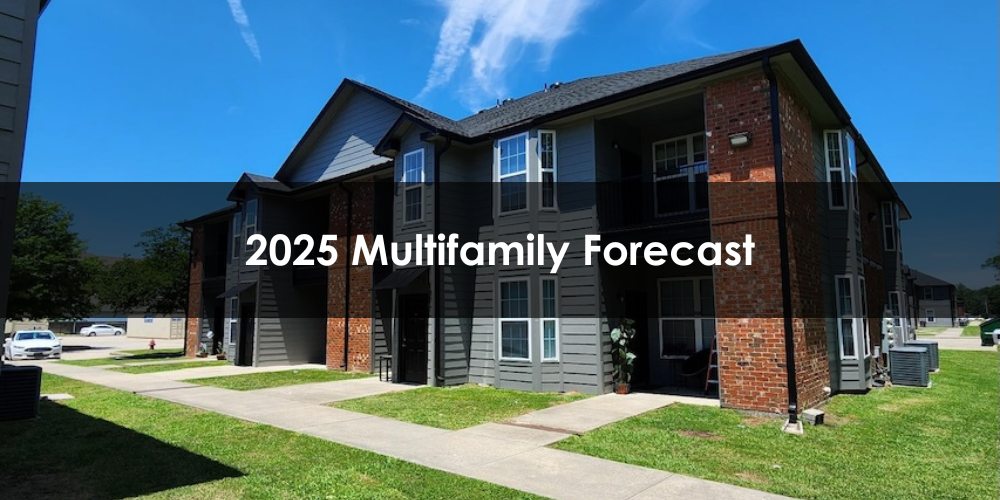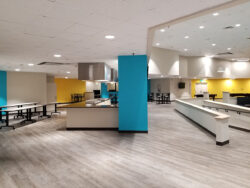The last few years have been challenging for the multi-family real estate market, with high renter demand but an oversupply of units and a record low number of new multifamily starts. 2025 is expected to mark the beginning of a cyclical recovery of the market, with continued strong renter demand, higher rent growth, and increased construction activity in certain regions.
In this article, our multifamily experts explain five key trends we’re expecting this year, and how developers should respond to ensure that their properties remain attractive and profitable.
#1: Continued strong renter demand
Renter demand has stayed high for years, and is expected to remain so in 2025. High interest rates make the average monthly cost of home ownership two to three times higher than the average monthly rent. These financial factors, combined with the high proportion of Gen Z employees in the workforce (members of Gen Z typically have enough money to move out of their parents’ houses, but not enough to buy their own homes), make renting a more attractive option than buying in many cases.
Freddie Mac’s 2025 research report predicts a rent growth of 2.2% for the year, with a vacancy rate of 6.2%.
#2: Record-breaking number of new multi-family units
CBRE’s 2025 Multifamily Insights report shows that multifamily developers will add more multi-family units to the housing market than in any period since the 1970s. Much of that growth will be concentrated in the Sun Belt and Mountain regions of the United States, with regions like the Northeast seeing continued growth in construction activity as well.
The multifamily origination market, which has suffered post-pandemic, is expected to pick up slightly in 2025 to total approximately $380 billion.
#3: New federal regulations and potential privatization
The Federal Housing Finance Agency (FHFA) implemented new tenant protection standards for multifamily properties last year. These protections, which include required 30-day notices for rent increases and lease expiration, and a 5-day grace period for late payments, may or may not be affected by the new administration.
There is also increasing demand to privatize Fannie Mae and Freddie Mac, two companies that together back about 70% of U.S. mortgages. Currently overseen by the Treasury Department and the FHFA, Fannie Mae and Freddie Mac can borrow money on the capital markets at a risk-free rate because they are part of the government. As private entities, their borrowing costs may rise substantially, which would translate into higher mortgage rates.
While the future of Fannie Mae and Freddie Mac remains uncertain, multifamily developers who rely on those agencies for financing should keep a close eye on potential shifts in lending practices and impacts on affordable housing programs.
#4: Increased demand for eco-friendly housing and sustainable construction
The increasing emphasis on green construction began years ago and is expected to continue in 2025. Sustainable design is no longer considered optional in multifamily construction, as tenants and legislators prioritize the adoption of energy-efficient appliances, water-saving fixtures, LEED-certified buildings, and responsibly sourced materials.
According to recent research, 72% of renters prefer properties with sustainable practices, and many renters recognize that reduced water and energy consumption both helps the environment and decreases their utility expenses.
Developers should capitalize on this trend by renovating their multifamily properties to incorporate energy efficient features and achieve LEED certification.
#5: Trending amenities will include wellness and community spaces
When selecting amenity investments in 2025, multifamily developers should respond to tenants’ demand for wellness spaces such as state-of-the-art fitness centers. The wellness real estate market is expected to grow from $438 billion in 2023 to $913 billion by 2028, with over 59% of multifamily developers reporting increased demand for wellness features in their properties.
Other trending amenities for the year include coworking spaces for remote work, outdoor gathering spaces that encourage social interaction, and large leasing centers or community clubhouses.
Partner with ASH Renovations in 2025
We are an experienced multifamily renovations contractor. We have helped developers in the Southeast and Northeast transform the exterior and interior of their properties to add curb appeal, attract more residents, and decrease utility and operational costs. Contact us today to discuss your next project.





